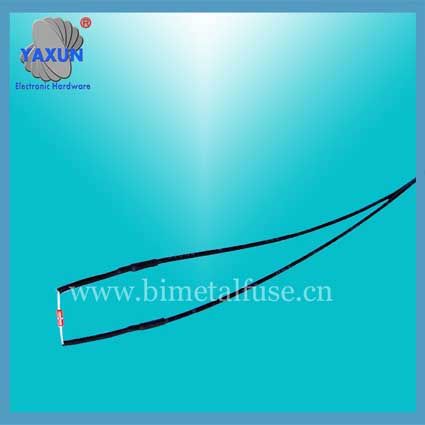Characteristics of computer temperature measurement thermistor
Computer commonly used Intel Dothan processor its instantaneous maximum power consumption of about 37W, AMD ATHLON processor its instantaneous maximum power consumption of about 35W to 40W, Intel's next-generation Merom processor's maximum power consumption will be as high as 50W. CPU is an important goal of temperature detection in a computer. At present, either Intel or AMD's CPU,CPU internal contains a remote temperature detection with the diode, To provide a temperature sensor, Directly detect the CPU internal die temperature, And its precise temperature control.
In addition to the CPU, As the LCD monitor resolution increases, Graphics processing chip data processing capacity is also greatly increased. In order to allow the graphics processing chip to work reliably, Currently widely used graphics processing chip, Also with the CPU, Are included to provide remote temperature detection of the diode. In order to directly detect the temperature of the internal die of the graphics processing chip, And its temperature control. In a laptop,Other components that may require temperature detection and control include DDR memory, hard drives, and optical drives. The purpose of the temperature detection is that the embedded microcontrollers of the notebook computer can make appropriate power management and thermal management of the computer.
The computer's temperature sensing resistor has the following advantages:
1. Let the system play the highest efficiency:
When the actual temperature of the component does not reach the critical point of the system down, Because the temperature sensor detects the error, May cause the system to reduce the frequency of early action, This will make the system unable to maximize the effectiveness.
2. Reduce system noise and extend computer battery life:
If the temperature sensor temperature is higher than the actual temperature of the system, Will cause the fan to run early, Or fan speed higher than the actual demand. This will cause unnecessary fan noise and power consumption.
3. To improve system stability and increase product competitiveness:
If the temperature sensor temperature is lower than the actual temperature of the system, The system may still maintain a high operating frequency when the actual temperature of the system has reached the critical point of the downgrade, Resulting in the system paralyzed or even damaged.In addition, accurate temperature detection allows the system to use the smallest cooling module, So you can reduce the cost of cooling module, Increase product competitiveness.

In addition to the CPU, As the LCD monitor resolution increases, Graphics processing chip data processing capacity is also greatly increased. In order to allow the graphics processing chip to work reliably, Currently widely used graphics processing chip, Also with the CPU, Are included to provide remote temperature detection of the diode. In order to directly detect the temperature of the internal die of the graphics processing chip, And its temperature control. In a laptop,Other components that may require temperature detection and control include DDR memory, hard drives, and optical drives. The purpose of the temperature detection is that the embedded microcontrollers of the notebook computer can make appropriate power management and thermal management of the computer.
The computer's temperature sensing resistor has the following advantages:
1. Let the system play the highest efficiency:
When the actual temperature of the component does not reach the critical point of the system down, Because the temperature sensor detects the error, May cause the system to reduce the frequency of early action, This will make the system unable to maximize the effectiveness.
2. Reduce system noise and extend computer battery life:
If the temperature sensor temperature is higher than the actual temperature of the system, Will cause the fan to run early, Or fan speed higher than the actual demand. This will cause unnecessary fan noise and power consumption.
3. To improve system stability and increase product competitiveness:
If the temperature sensor temperature is lower than the actual temperature of the system, The system may still maintain a high operating frequency when the actual temperature of the system has reached the critical point of the downgrade, Resulting in the system paralyzed or even damaged.In addition, accurate temperature detection allows the system to use the smallest cooling module, So you can reduce the cost of cooling module, Increase product competitiveness.






